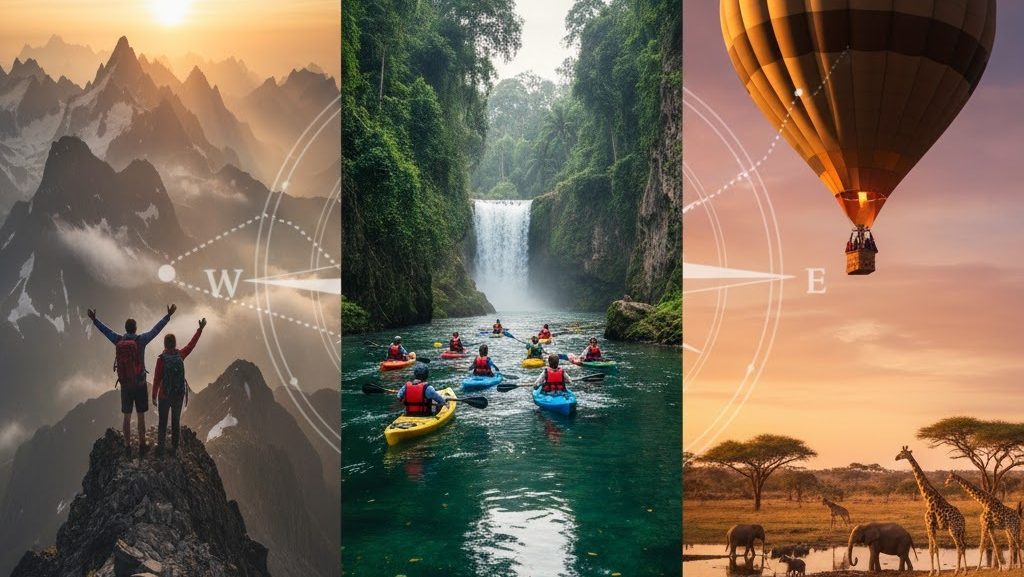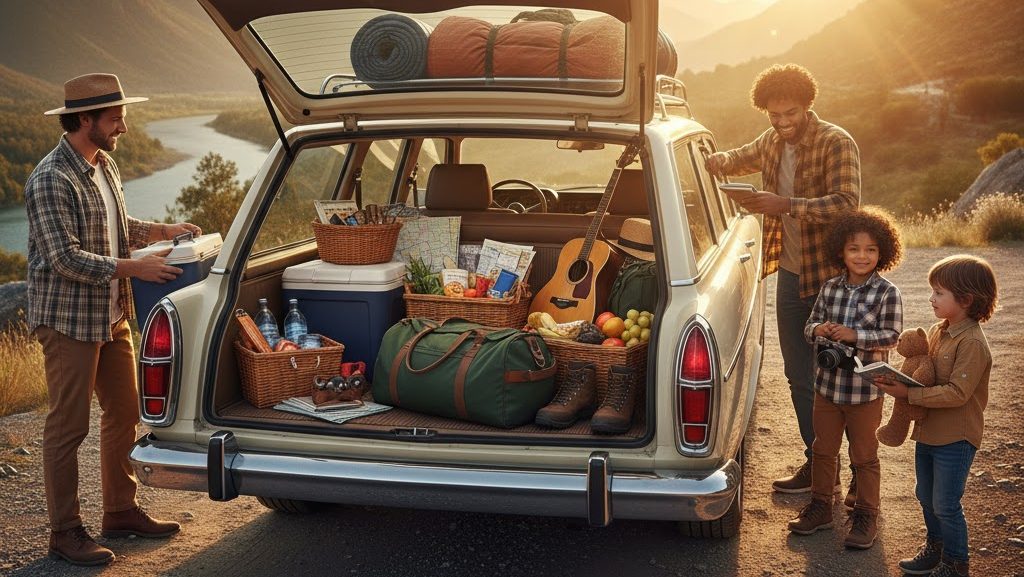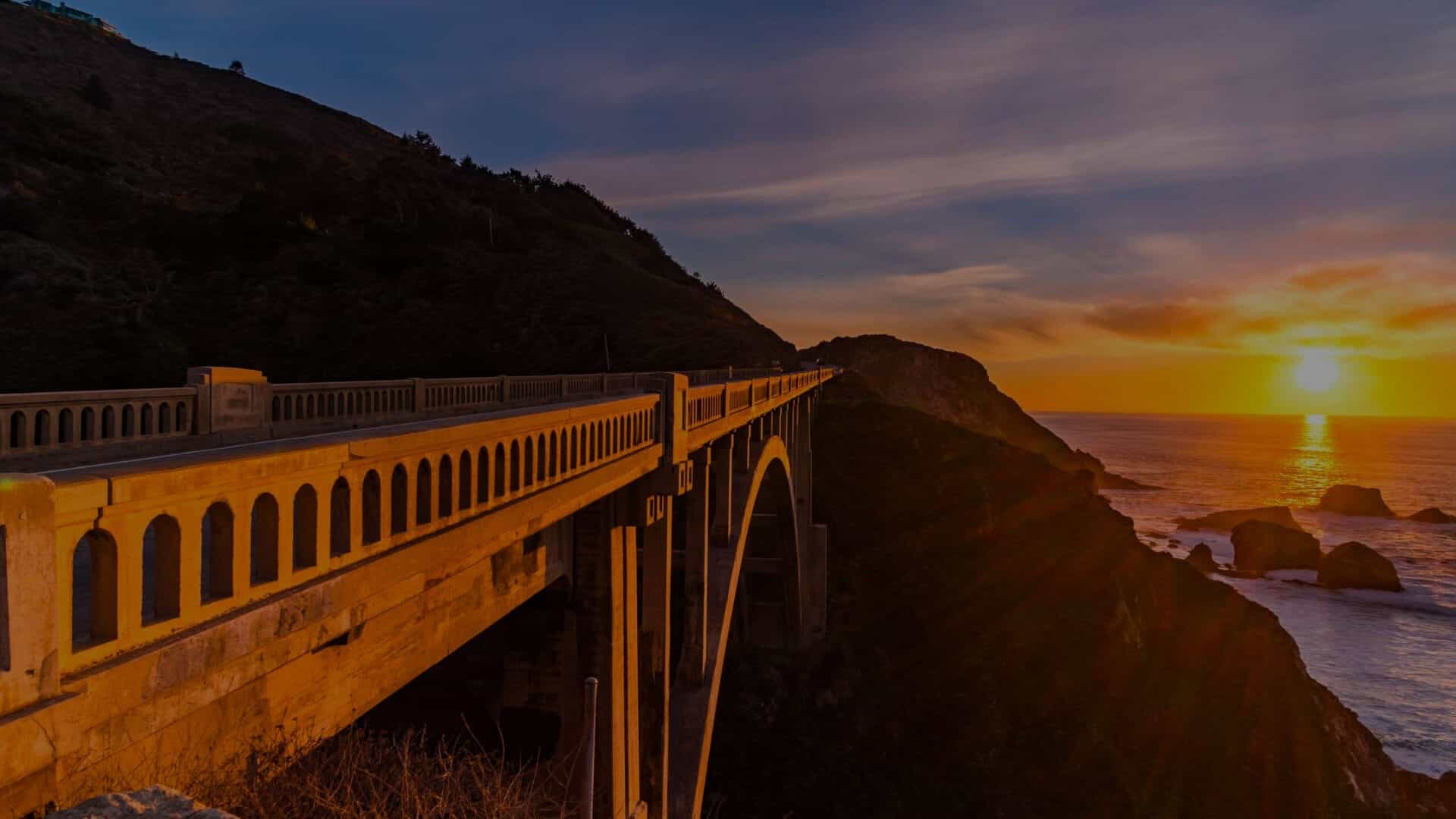Exploring the Thrill of the American Outdoors
Adventure travel in the United States has never been more popular. With its breathtaking landscapes, diverse ecosystems, and endless opportunities for exploration, the U.S. offers some of the world’s most extraordinary destinations for thrill-seekers. From hiking in the Rocky Mountains to kayaking in Alaska’s glacial bays, the possibilities are truly endless.
Planning an epic U.S. adventure vacation is about more than choosing a destination—it’s about curating experiences that push boundaries, reconnect you with nature, and recharge your soul. Whether you’re an adrenaline junkie, a family of explorers, or a first-time adventurer, this comprehensive guide will help you plan your perfect journey.
Why Adventure Travel in the U.S. Is Booming
Adventure travel has seen exponential growth in recent years. According to a 2023 study by the Adventure Travel Trade Association (ATTA), 65% of American travelers prefer active or adventure-oriented vacations over traditional leisure trips. Researchers from Cornell University’s Center for Hospitality Research also found that adventure vacations boost psychological well-being, helping travelers build confidence, reduce stress, and improve life satisfaction.
The U.S., with its vast geography, is uniquely suited for this kind of travel. From desert safaris in Arizona to ziplining through the forests of Oregon, the variety of adventure experiences is unmatched.
Step-by-Step Guide to Planning an Epic Adventure Vacation
To make your trip unforgettable, proper planning is essential. Below is a comprehensive roadmap to help you organize your next great escape.
1. Choose the Right Adventure Destination
The U.S. is enormous—spanning more than 3.8 million square miles—so narrowing down your options is crucial. Consider the type of adventure that excites you most.
| Adventure Type | Top U.S. Destinations | Ideal Season |
|---|---|---|
| Hiking & Trekking | Yosemite (CA), Grand Canyon (AZ), Glacier National Park (MT) | Spring – Fall |
| Water Adventures | Florida Keys, Lake Tahoe (CA/NV), Alaska fjords | Summer |
| Winter Sports | Aspen (CO), Jackson Hole (WY), Lake Placid (NY) | Winter |
| Desert Expeditions | Moab (UT), Sedona (AZ), Death Valley (CA) | Fall – Spring |
| Wildlife & Nature Exploration | Yellowstone (WY/MT/ID), Denali (AK), Everglades (FL) | Summer |
When selecting your destination, research weather patterns, local regulations, and accessibility. Many national parks require advance reservations or permits for backcountry exploration.
2. Define Your Adventure Goals
Ask yourself what kind of experience you want:
- Physical challenge? Go for multi-day treks or mountain biking.
- Cultural immersion? Visit Native American heritage sites or take eco-tours in Hawaii.
- Peace and mindfulness? Try forest bathing in Oregon’s rainforests or yoga retreats in Sedona.
Setting clear goals will help you tailor your itinerary and manage expectations, ensuring your adventure aligns with your motivations.
3. Create a Budget That Fits Your Adventure Style
Budgeting is crucial for a stress-free trip. The cost of an adventure vacation in the U.S. varies widely depending on location, accommodation type, and activity level.
| Expense Category | Average Cost (Per Person, Per Week) |
|---|---|
| Accommodation (Campsite to Lodge) | $300 – $1,500 |
| Food & Drinks | $200 – $700 |
| Guided Activities | $400 – $1,200 |
| Equipment Rentals | $100 – $500 |
| Transportation | $150 – $800 |
Tip: Many adventure travelers save by camping, cooking their own meals, and booking tours in off-peak seasons. Consider using travel reward points for flights or lodging to maximize savings.
4. Plan an Itinerary That Balances Adventure and Rest
One common mistake travelers make is overpacking their schedules. Adventure travel can be physically demanding, so balance intense activities with downtime.
Sample 7-Day Itinerary for the Pacific Northwest:
| Day | Activity | Location |
|---|---|---|
| 1 | Arrival & orientation hike | Portland, Oregon |
| 2 | Whitewater rafting | Deschutes River |
| 3 | Rock climbing | Smith Rock State Park |
| 4 | Rest day – local brewery tour | Bend, Oregon |
| 5 | Ziplining & forest walk | Mount Hood |
| 6 | Kayaking & wildlife watching | Columbia River Gorge |
| 7 | Scenic drive & departure | Portland |
A well-paced itinerary ensures you return home energized, not exhausted.
5. Research Permits and Safety Regulations
Before venturing out, always check for permits, trail conditions, and local safety advisories. The U.S. National Park Service (NPS) and Bureau of Land Management (BLM) websites provide updated regulations.
According to a study by the University of Utah’s Department of Parks, Recreation, and Tourism, 30% of adventure travelers underestimate environmental and safety risks. Proper preparation—like learning basic wilderness first aid and carrying emergency communication tools—can make all the difference.
Safety checklist:
- Register your itinerary with park rangers.
- Carry a GPS tracker or satellite phone.
- Pack extra food, water, and first-aid supplies.
- Understand wildlife behavior in your destination area.
6. Choose the Right Gear and Clothing
Having the proper equipment can make or break your adventure. Invest in high-quality, weather-appropriate gear.
Essential Gear List for Adventure Travelers:
- Backpack (waterproof and ergonomic)
- Navigation tools (GPS, compass, map)
- All-weather clothing layers
- Durable footwear
- Portable stove or cooking system
- Water purification tablets or filters
- Headlamp or flashlight
- Emergency kit
For eco-conscious travelers, consider renting gear or choosing sustainable brands that reduce environmental impact.
7. Embrace Sustainable Adventure Travel
Sustainability is a growing priority for modern travelers. According to research from Stanford University’s School of Earth, Energy & Environmental Sciences, sustainable tourism helps protect ecosystems while benefiting local communities.
Tips for eco-friendly adventure travel:
- Support local guides and small businesses.
- Avoid single-use plastics.
- Stay on designated trails.
- Respect wildlife habitats.
- Choose accommodations with eco-certifications.
Your choices can make a significant impact on preserving the natural beauty of the U.S. for future explorers.
8. Capture and Share Your Journey
Documenting your adventure not only preserves memories but can also inspire others. Whether you blog, vlog, or post on social media, storytelling enhances the personal meaning of your journey.
Use hashtags like #USAdventureTravel, #ExploreAmerica, and #EpicVacationsUSA to reach adventure-loving communities online.
Pro tip: Carry a compact action camera or smartphone gimbal for stable, high-quality footage. Capture moments, not just landmarks.
Top 10 Epic U.S. Adventure Destinations You Should Experience
Here’s a listicle of the most breathtaking adventure destinations in America:
- Grand Canyon National Park (Arizona) – Iconic for whitewater rafting and rim-to-rim hiking.
- Yosemite National Park (California) – A paradise for rock climbers and nature photographers.
- Moab (Utah) – The ultimate playground for off-road biking and desert trekking.
- Denali National Park (Alaska) – Rugged wilderness for true backcountry adventurers.
- Appalachian Trail (Eastern U.S.) – A 2,000-mile journey through diverse landscapes.
- Zion National Park (Utah) – Known for its slot canyons and cliffside trails.
- Hawai’i Volcanoes National Park (Big Island) – Experience lava landscapes and tropical rainforests.
- Lake Tahoe (California/Nevada) – Perfect for kayaking, paddleboarding, and skiing.
- Glacier National Park (Montana) – Home to alpine meadows and crystal-clear lakes.
- Everglades National Park (Florida) – Explore the wild wetlands by airboat or kayak.
Scientific Insights: Why Adventure Travel Boosts Mental Health
According to research by the University of Michigan’s Department of Psychology, spending time in nature enhances mood, focus, and creativity. Adventure activities also stimulate dopamine and endorphin release—natural chemicals that promote happiness.
Additionally, a Stanford University study found that outdoor exploration significantly reduces rumination (negative thought cycles) and improves cognitive flexibility. This is why many mental health experts recommend adventure travel as a way to combat burnout and anxiety.
Frequently Asked Questions (FAQs)
1. What is considered an adventure vacation?
An adventure vacation involves engaging in physically active and immersive outdoor experiences such as hiking, kayaking, climbing, or exploring remote destinations.
2. How much does it cost to plan an adventure vacation in the U.S.?
On average, travelers spend between $1,000 and $3,000 per person per week, depending on the location, activities, and accommodation type.
3. What is the best time of year to plan an adventure trip in the U.S.?
The spring and summer months (April–September) are ideal for most outdoor adventures. However, winter destinations like Colorado and Utah offer world-class skiing and snowboarding from December to March.
4. Do I need travel insurance for adventure travel?
Yes. Always purchase comprehensive travel insurance that covers adventure sports, medical emergencies, and trip cancellations.
5. How can I make my adventure vacation more sustainable?
Choose eco-certified accommodations, support local communities, use reusable gear, and follow the Leave No Trace principles.
6. Are there guided adventure travel options in the U.S.?
Absolutely. Many companies, including REI Adventures, National Geographic Expeditions, and local tour operators, offer guided excursions for all experience levels.
7. What if I’m new to adventure travel?
Start small with weekend trips, local hikes, or beginner-friendly tours. Build your confidence gradually before tackling more challenging adventures.



